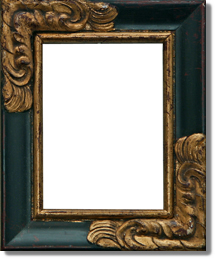| About LEMA | Find | Projects | Documents | Research | Gallery |

|
THOMAS, William (d.1813)
Assistant-Surgeon; medical officer serving in HEIC. William Thomas received a Certificate of the Corporation of Surgeons in 1798 and served as a Surgeon's Mate on the HEIC Melville Castle. On 3 January 1799 he petitioned for an appointment as an Assistant Surgeon, and he was confirmed with this rank in a General Order on 15 December 1799. Soon afterwards he travelled to India and disembarked in Bombay in c.1800. He was sent to Egypt in 1801-1802 as part of the Indian expeditionary army sent under the command of Major-General Baird, and was employed as a medical officer in the Pest Hospital, assisting in the treatment of British soldiers who fell victims to plague and eye infections during the campaign against Napoleonic troops in Egypt. Thomas was travelling on board the Bombay Marine 12-gun brig Grappler when it was captured on 31 August by 44-gun French frigate la Piémontaise near Quilon on the west coast of India. The Grappler became a 'prize vessel' and sailed in convoy with la Piémontaise until at least 5 September, when she assisted the French frigate in the capture of an Arab vessel named the Allamany, sailing from Muscat to Madras. The captured crew and passengers of the Grappler were granted 'paroles' as prisoners of war, and placed on board the Allamany which was then instructed to sail for Madras which it reached on Monday 15 September. The Allamany appears to have sailed on to Calcutta with Assistant-Surgeon William Thomas and Lieutenant G.W. Brande as passengers, arriving there in late September. They remained in Calcutta for approximately two months; then on 10 December they boarded the HEIC vessel Northumberland and took a passage back to Bombay which they reached on 19 February 1807 after a six-week voyage. Both men must have quickly availed themselves of the opportunity to join Lachlan Macquarie on his planned return trip to Britain. They departed from Bombay on 18 March 1807 for Bushire and Basra in the Persian Gulf on board the recently commissioned 16-gun cruizer Benares [HEIC: Bombay Marine]. In Baghdad their party was enlarged to include Major Robert O'Neil, 56th Regiment of Foot, and they travelled by caravan through Ottoman-controlled Iraq, and Persia (Iran). From Bandar-e Anzali they sailed across the Caspian Sea via Russian-occupied Baku to Astrakhan. Here Thomas, Brande and O'Neill separated from Macquarie and his servant 'George', opting to travel by a different route through Russia. They were reunited again in Moscow and travelled on to St. Petersburg, before finally sailing home (with the exception of O'Neill) to Britain on board HMS Calypso in September 1807. Soon after his return Assistant-Surgeon William Thomas made the necessary arrangements to complete his parole obligations with the Board of Transport. In addition Thomas contacted the Court of Directors [HEIC] through a series of letters requesting clarification of the nature and extent of his furlough in Britain, and seeking financial compensation (unsuccessfully) for his costs as a prisoner of war, as well as requesting remuneration for earlier medical duties performed in treating plague victims in Egypt in 1801-1802 during the military campaign against the French. On 20 April 1808 he advised that his prisoner of war exchange had recently been finalised through the Board of Transport. He remained in Britain until April 1809, when he returned to India on board the East Indiaman Dover Castle, arriving in Bombay on 19 September. Thomas had been absent from India for approximately two and half years. By 1810 Thomas was recorded as serving with the 2nd Battalion 1st Regiment Native Infantry. At some stage in 1811 he must have reached Calcutta, because on 27 April 1812 he married Eliza Augusta Chippendall (1783-18**?), the elder sister of Henry James Chippendall (1788-1839), writer and junior merchant who was employed as Head Assistant to the Collector of Government Customs and Town Duties in Calcutta. After their marriage the couple returned to Bombay where Thomas resumed his regimental duties. However, Eliza would be widowed within twelve months: William Thomas died on 15 February 1813 and was buried in Bombay the following day.
References:
Secondary Sources: Return to: Profiles | Biographical Register |





